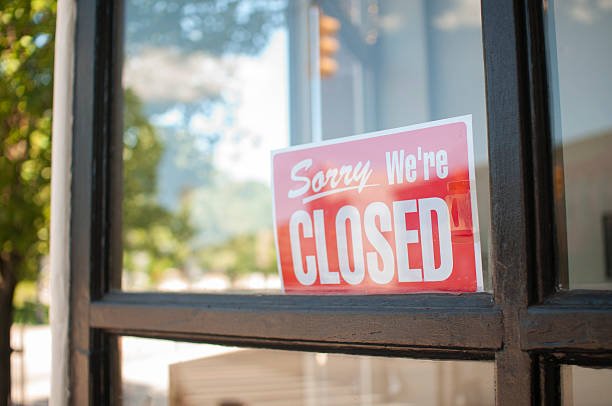
Creditors’ Voluntary Liquidation (CVL): Is it Right for Your Company?
If your company is facing mounting debts and pressure from creditors, you’re not alone. Many company directors find themselves in this position and need to act fast.
A Creditors’ Voluntary Liquidation (CVL) can be the best option when financial recovery isn’t possible, allowing you to close the company in an organised way while protecting yourself from personal liability.
At Company Debt, our experienced team is here to guide you through the CVL process. We help directors act swiftly and meet all legal obligations, providing a structured solution that helps you regain control of the situation. Here’s everything you need to know about how the CVL process works and whether it’s right for your business.
- What is a Creditors’ Voluntary Liquidation (CVL)?
- Why Choose a CVL?
- Is a CVL Right for Your Company?
- Step-by-Step Guide to the CVL Process
- Benefits of Choosing a CVL
- Risks and Challenges in a CVL
- What are the Costs of a CVL?
- CVL vs Other Insolvency Procedures
- Next Steps for Directors Facing Insolvency
- How We Can Help with Voluntary Liquidation
- Creditors’ Voluntary Liquidation FAQs
What is a Creditors’ Voluntary Liquidation (CVL)?
A CVL is a formal insolvency process that allows directors of insolvent companies to voluntarily close their business. Unlike compulsory liquidation, where a creditor initiates legal action, a CVL is started by the company’s directors and involves creditors, making the process more collaborative and transparent.[1]Trusted Source – GOV.UK – Directors’ Responsibilities in Liquidation
Why Choose a CVL?
A CVL is often the most practical solution for insolvent companies, as it allows directors to take control before creditors force legal action. This proactive approach can reduce creditor pressure, prevent further legal complications, and help ensure compliance with all insolvency laws.
Is a CVL Right for Your Company?
If your business can’t pay its debts and creditor pressure is growing, a CVL may be the most appropriate solution. Here are some signs that a CVL might be necessary:
- Your company cannot pay its debts as they become due.
- Creditors are threatening legal action or issuing statutory demands.
- Other business recovery options, such as administration or a Company Voluntary Arrangement (CVA), are not viable.
Important Considerations:
- A CVL is specifically for insolvent companies.
- It allows you to take control of the situation rather than wait for compulsory liquidation.
- Involving creditors in the process ensures greater transparency.


Step-by-Step Guide to the CVL Process
1. Board Decision and Shareholder Approval
The first step is to acknowledge the insolvency of your company. A board meeting is held to pass a resolution to wind up the company, which requires 75% shareholder approval. Once this decision is formalised, you must appoint a Licensed Insolvency Practitioner (IP), who will take control of the liquidation process and communicate with creditors.
2. Engaging a Licensed Insolvency Practitioner (IP)
The IP will oversee the management and sale of the company’s assets, ensuring the process is legally compliant and transparent to all stakeholders, including creditors. Their primary objective is to maximise returns for creditors.
3. Communication with Creditors
Creditors will be invited to a meeting where they can confirm the liquidator’s appointment or suggest an alternative. The IP’s role is to sell company assets and distribute proceeds to creditors, following a strict legal order: secured creditors first, followed by unsecured creditors.
4. Director’s Obligations During Liquidation
As a director, your role shifts once liquidation starts. You’ll need to provide the IP with a statement of affairs, detailing your company’s financial position. The IP will also investigate the company’s past activities to ensure no wrongful trading occurred. If you’ve acted responsibly, there’s no need to worry, but any misconduct may result in personal liability.
5. Final Liquidation and Company Dissolution
After the liquidation is complete, the company will be dissolved and removed from the Companies House register, ceasing to exist as a legal entity. All remaining assets will be distributed, and unsecured creditors will be paid after secured creditors.
Benefits of Choosing a CVL
- Proactive Control: Take control of the liquidation process before creditors force legal action.
- Protection from Personal Liability: Acting responsibly through liquidation can help directors avoid being held personally liable for company debts.
- Structured Resolution: A clear and organised process that includes creditor involvement to reduce the risk of disputes or legal action.
- Peace of Mind: Directors can close the company knowing they’ve followed legal procedures, allowing them to move on to future business ventures.
Risks and Challenges in a CVL
- Director Disqualification: If it’s found that you traded while insolvent, there’s a risk of being disqualified from acting as a director.
- Investigation of Conduct: The liquidator will review your conduct leading up to insolvency, which may result in fines or personal liability if misconduct is identified.
- Loss of Business and Jobs: In most cases, the company will close, resulting in job losses, although parts of the business may continue under new ownership.
What are the Costs of a CVL?
The cost of a CVL includes:
- Liquidator’s Fees: Typically range from £4,000 to £7,000 for smaller companies, depending on the complexity of the case.
- Legal and Administrative Fees: Additional costs may arise for legal paperwork and administration, which will vary based on your company’s situation. These costs should be outlined in advance.
Read our full article on liquidation costs.
CVL vs Other Insolvency Procedures
- CVL vs Compulsory Liquidation: In compulsory liquidation, creditors force the process, whereas in a CVL, directors initiate it.
- CVL vs Members’ Voluntary Liquidation (MVL): An MVL is for solvent companies, while a CVL is for insolvent ones.
- CVL vs Administration: Administration seeks to rescue the business, while a CVL focuses on liquidating assets.
- CVL vs Pre-Pack Administration: A pre-pack allows parts of the business to be sold and continue trading, often yielding better returns for creditors.
Next Steps for Directors Facing Insolvency
- Consult a Licensed Insolvency Practitioner (IP): Engage an IP early to explore your options and understand your responsibilities.
- Communicate with Creditors: Keeping creditors informed may help prevent aggressive legal actions.
- Consider Other Options: Before committing to a CVL, review whether administration or a CVA might offer a better solution.
How We Can Help with Voluntary Liquidation
At Company Debt, we understand the challenges and pressures directors face when considering liquidation. Our licensed insolvency practitioners offer practical, expert advice tailored to your situation, helping you navigate each step of the CVL process efficiently.
- Free Consultation: We assess your company’s financial position and offer personalised advice on the best course of action.
- Licensed Insolvency Practitioners: Our experienced team ensures full legal compliance while guiding you through liquidation.
- Support Throughout the Process: We make the process as straightforward as possible, addressing your concerns and helping protect you from unnecessary risks.
Contact Us for Expert Insolvency Support
For immediate help, get in touch through:
- Live Chat: Available on our website for real-time support.
- Email: info@companydebt.com
- Phone: 0800 074 6757
For more information, you can also visit resources from The Insolvency Service or GOV.UK.
Director information hub: Creditors’ voluntary liquidation (CVL) – GOV.UK
Liquidate your limited company: Arrange liquidation with your creditors – GOV.UK
Creditors’ Voluntary Liquidation FAQs
What happens to employees during a CVL?
During a CVL, the company’s employees will typically be made redundant, and will be entitled to claim any unpaid wages or redundancy pay from the government’s Redundancy Payments Office.
What happens to directors during a CVL?
During a CVL, the company’s directors may be held liable for any wrongful trading or other misconduct contributing to the company’s financial difficulties. They may also be required to provide information and assistance to the liquidator in investigating the company’s affairs.
What happens to the company’s creditors during a CVL?
During a CVL, the company’s creditors will be ranked in priority order, and will be paid from the proceeds of the sale of the company’s assets in accordance with that ranking. The company’s secured creditors, such as banks, will typically be paid first, followed by unsecured creditors such as suppliers and employees.
What happens to shareholders during a CVL?
During a CVL, the company’s shareholders will typically receive nothing, as the proceeds of the sale of the company’s assets are used to pay the company’s creditors.
How Long Will the CVL Process Take?
The Creditors’ Voluntary Liquidation (CVL) process typically takes between 6 and 12 months. However, the exact timeline can vary depending on factors such as the complexity of the company’s assets and the number of creditors involved. The liquidation process involves asset sales, distribution to creditors, and final closure, which can extend the timeframe if complications arise. In simpler cases, the liquidation might be completed faster.
The primary sources for this article are listed below, including the relevant laws and Acts which provide their legal basis.
You can learn more about our standards for producing accurate, unbiased content in our editorial policy here.
- Trusted Source – GOV.UK – Directors’ Responsibilities in Liquidation








